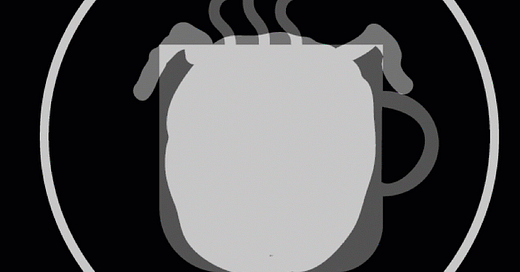YOUR READING ASSIGNMENTS
Limited access to this copyrighted material is by explicit permission of the author and only available for this free cost during the active running of this course in 2024. The final version will be available in book format shortly after the conclusion of this course.
Class Agenda Week 8: “The Bomb That Shattered Reality”
Twin Peaks Class – Class Agenda for Part Eight of The Return
A welcoming and serious discussion based on JB Minton’s analysis of nuclear devastation, moral corruption, and the cosmic battle between good and evil in Twin Peaks: The Return
Part Eight of Twin Peaks: The Return is a radical shift in storytelling, often described as an avant-garde nightmare that reframes everything we know about Twin Peaks. JB Minton’s analysis argues that this episode is a mythological origin story, not of BOB, but of Dale Cooper’s moral corruption and the dream world that now traps him.
Key Themes for Discussion:
The Atomic Bomb as the Birth of Corruption – How trauma fractures the psyche.
The Woodsmen as the Dream’s Enforcers – Their role in maintaining illusion.
The Fireman & Lady Dido’s Response – The creation of Laura Palmer as a counterforce to evil.
Who is the Dreamer? – The viewer’s participation in Cooper’s struggle.
The Inescapability of Corruption – Why Twin Peaks is forever altered.
Scene-by-Scene Breakdown & Discussion Questions
1. Mr. C’s Resurrection: The Death Cheat
📍 Key Idea: The rules of reality do not apply in this corrupted dream.
Ray Monroe shoots Mr. C, and he should be dead—but the Woodsmen intervene, resurrecting him through a dark ritual of blood and dirt.
A BOB bubble emerges from Mr. C’s body, proof that BOB is still within him but also separate from him.
Minton describes this as a “video game respawn”, reinforcing that we are inside a dream where consequences don’t function normally.
Discussion Questions:
If Mr. C controls the dream, why did he allow himself to be shot? Was this a test, a punishment, or something else?
Why does Ray call him “Mr. Cooper” instead of Mr. C? Does he see no difference?
If the Woodsmen are enforcers of the dream, are they protecting Mr. C—or simply maintaining the narrative structure of this world?
🔹 Challenging Statement: “Mr. C is not just a villain—he is a function of the dream itself.”
If true, what does that say about his ability to escape?
2. Nine Inch Nails at the Roadhouse: A Narrative Reset
📍 Key Idea: The Roadhouse band acts as a signal for shifts in Cooper’s dream.
The performance of “She’s Gone Away” takes place much earlier in the episode than usual.
Minton argues that this is not just an interlude—it is a transition point, a reset before the narrative jumps to 1945.
The lyrics reference loss, disorientation, and something being irreversibly gone—perhaps Laura Palmer, maybe the real Cooper.
Discussion Questions:
What does “She’s Gone Away” mean in this context? Who is “she” referring to?
Why does this band performance feel different from the others in The Return?
Does this moment indicate that we, the audience, are about to see something Cooper cannot comprehend?
🔹 Challenging Statement: “This performance is not for the characters—it is for the viewer, to prepare us for what’s coming.”
3. The Atomic Bomb & The Birth of Evil
📍 Key Idea: The bomb is a metaphor for the shattering of moral integrity.
The detonation of the first atomic bomb in 1945 is shown in agonizing, nightmarish, slow motion.
Minton argues that this is not the literal creation of BOB, but a mythological moment where corruption enters Cooper’s psyche.
The explosion is followed by an abstract descent into chaos—flashing light, molecular breakdown, and the grotesque vomiting of eggs, one containing BOB.
Discussion Questions:
What does this moment represent if this is not BOB’s literal birth?
Why does Lynch use a nuclear explosion as a metaphor for corruption?
What does it mean that this sequence is entirely without dialogue?
🔹 Challenging Statement: “The true horror of this scene is not the birth of BOB—it is the realization that this corruption was always inside Cooper.”
4. The Convenience Store & The Woodsmen’s Corruption
📍 Key Idea: The Woodsmen begin as neutral figures but become corrupted over time.
The convenience store flickers in and out of existence, a liminal space between dimensions.
The Woodsmen are seen before they are “burned,” suggesting they are not always malevolent.
Minton interprets this scene as corruption spreading, distorting the function of memory and reality.
Discussion Questions:
Are the Woodsmen supernatural beings, or are they symbolic representations of something more profound?
What is the significance of the Convenience Store’s erratic phasing?
Does this scene suggest corruption spreads like a virus, consuming even neutral figures?
🔹 Challenging Statement: “The Woodsmen do not create corruption—they simply ensure that it continues.”
5. The Fireman, Lady Dido & The Birth of Laura Palmer
📍 Key Idea: Laura is not just a person—she is a force of goodness meant to counteract evil.
Inside a floating fortress, The Fireman watches the bomb’s aftermath and responds.
He produces a golden orb containing Laura Palmer’s face, which Lady Dido kisses and releases into the world.
Minton argues that Laura is not just a girl who died—she embodies Cooper’s last hope for moral redemption.
Discussion Questions:
Is Laura Palmer in this dream or a construct designed to save Cooper?
Does The Fireman create Laura, or is he simply revealing her role in the cosmic balance?
Why does Laura suffer so much if she is a force of goodness?
🔹 Challenging Statement: “The Fireman does not create Laura—he preserves what is already pure inside Cooper.”
6. The Invasion of the Frog-Moth & The Corruption of Innocence
📍 Key Idea: The infection of evil spreads at the moment of vulnerability.
In 1956, a frog moth hatches from an egg and crawls inside a sleeping girl’s mouth.
Meanwhile, a Woodsman takes over a radio station, broadcasting a hypnotic chant:
"This is the water, and this is the well. Drink full and descend. The horse is the white of the eyes and dark within."Minton interprets this as when moral corruption takes root within Cooper’s subconscious.
Discussion Questions:
What does the frog-moth represent? Is it a form of BOB, or something worse?
Why does the radio station broadcast cause people to collapse?
Is the girl in this scene a young Sarah Palmer? If so, what does that mean?
🔹 Challenging Statement: “Corruption does not attack—it waits for moments of vulnerability and then takes hold.”
Final Reflection: Who Is the Dreamer?
Minton argues that we, the audience, are inside Cooper’s psyche, influencing his fate.
If Cooper’s soul is corrupted, is there a way to save him? Or is he doomed to repeat this cycle?
🔹 Final Thought Exercise:
If you were inside Cooper’s dream, would you try to wake him up? Or would you let him stay?
Next class… "Part Nine”
Support This Community With A Paid Subscription and Share Your Thoughts On Twin Peaks With Other Good People. Every Comment Gets a Response.
AI DISCLAIMER: This podcast was produced using Google’s NotebookLM, but I put a lot of work into the prompting, and I think it has accomplished a great job of the goal I asked it to perform.





![[Twin Peaks] Chapter 15: Hour Eight "Gotta Light?"](https://substackcdn.com/image/fetch/$s_!OnCg!,w_140,h_140,c_fill,f_auto,q_auto:good,fl_progressive:steep,g_auto/https%3A%2F%2Fbucketeer-e05bbc84-baa3-437e-9518-adb32be77984.s3.amazonaws.com%2Fpublic%2Fimages%2F531271d5-fa40-46e7-9564-f4b04caedb92_2119x615.png)











Share this post